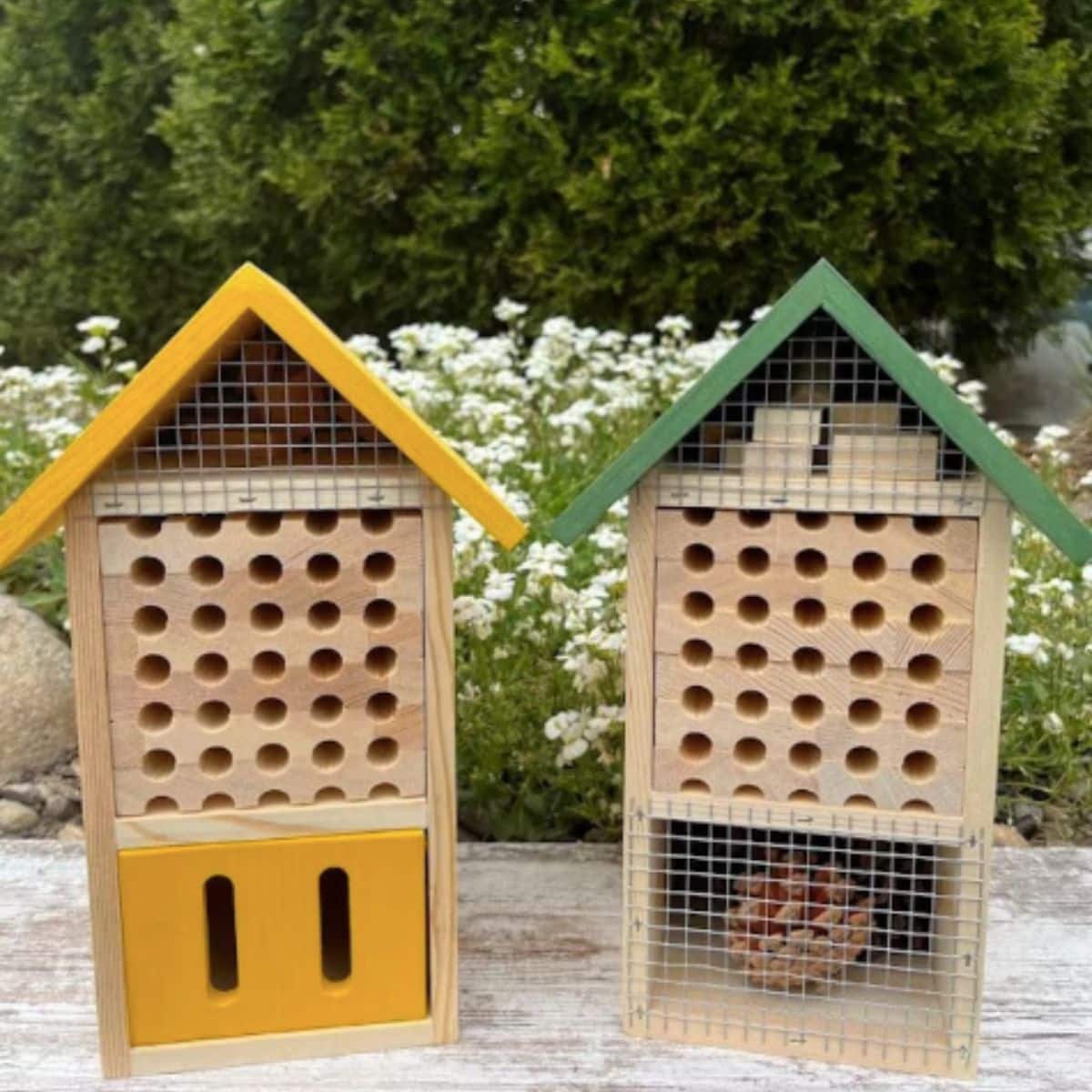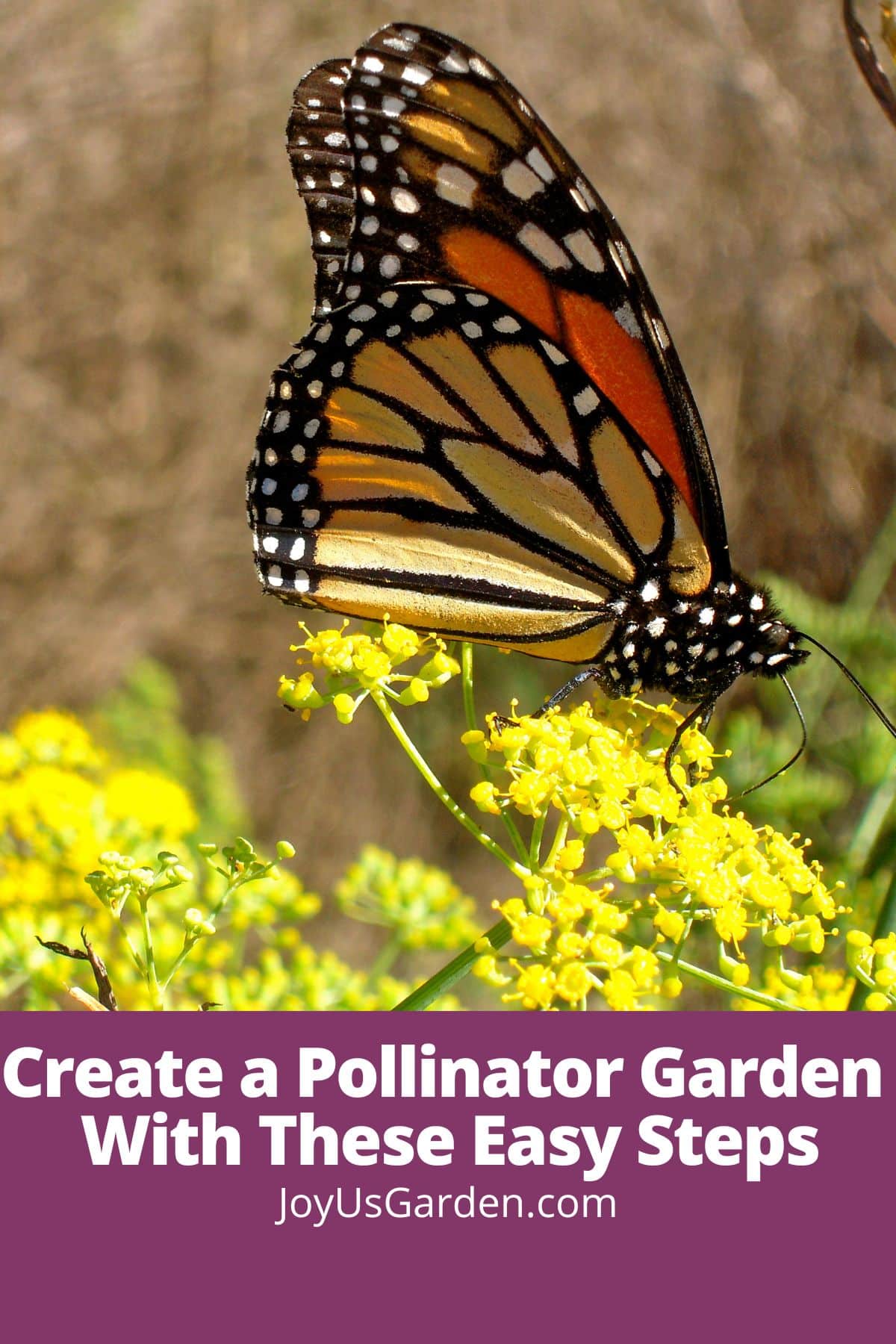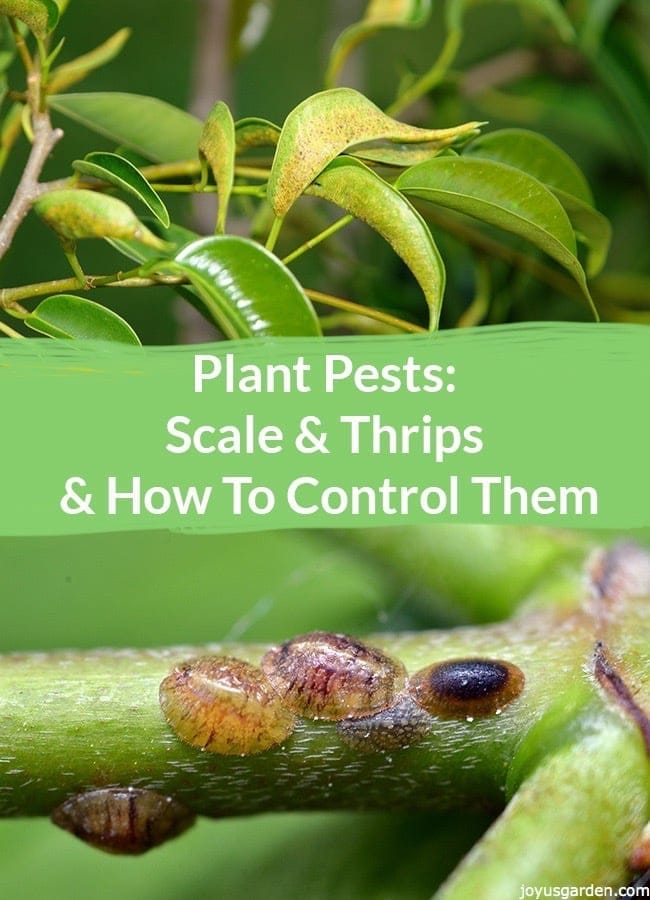Create a Pollinator Garden with These Easy Steps
Pollinator habitats are magical places where home gardeners can watch colorful monarch butterflies flit from flower to flower or enjoy the pleasant hum of honey bees and bumble bees hard at work. But as stunning as pollinator gardens can be, they are also functional!
Today, pollinator populations are on the decline, and home gardens are becoming increasingly important for pollinator survival. That’s why we put together this easy guide to help you with plant selection, gardening tips, and other essentials you’ll need to create your own pollinator garden!
What is a Pollinator Garden?

Pollinator gardens are specially curated spaces that combine pollinator plants with other key features to provide shelter, food, and a safe breeding place for bees, butterflies, hummingbirds, and beneficial insects.
If you have a large garden space, you can grow an assortment of plants for pollinators; however, small space gardeners can keep a single plant species or two in a planter or window box. Even the smallest pollinator garden can do a lot to support wildlife and insect pollinators!
Why Pollinator Gardens Are Important
Pollinator populations have been declining in recent years due to habitat loss and fragmentation, the overuse of pesticides, large scale farming practices, climate change, and other factors. While this is sad for pollinators, it spells trouble for people, too, because 80% of flowering plants, including food crops, depend on the activity of pollinators.
Creating pollinator gardens is one easy way to help support native bees and other native pollinators. And while large gardens can provide a lot of habitats, even a few plants in a container garden can give pollinators a safe place to land and a few “bites of food” while they’re foraging in urban environments and other areas where plant life is scarce.
8 Steps to Create a Pollinator Garden
Pollinator gardens are simple to grow and relatively easy to maintain; however, most pollinator gardens include a few key elements. If you have a small garden space, you may not be able to fit all of these elements in, but the more you include, the more benefits your garden will have for pollinators. Use the tips below to help you design a pollinator habitat that’s perfect for your garden space.
Grow The Right Plant Species

If you want to attract pollinators, the best thing you can do is to grow pollinator-friendly plants. Often, native plants purchased at local nurseries are the best choices for pollinators. Still, you can also find pollinator seed mixes that contain an assortment of wildflower seeds that are ideal for attracting bees, butterflies, and other wildlife.
Additionally, because pollinators are drawn to different flower types, consider growing an assortment of flowers in different shapes, sizes, and colors to suit the specific needs of different pollinators.
Plan for the Entire Growing Season
Beyond plant selection, it’s also important to grow plants with different bloom times to provide year-round food for pollinators. Ideally, you’ll want to grow plants that flower in early spring, summer, and late fall. This will ensure that, regardless of when pollinators visit your garden, they’ll always find pollen and nectar to eat!
Plant in Groups
Growing plants in clusters of at least 3 to 5 plants will give your garden a more natural look, but it’s also helpful for pollinators. This is because it’s much easier for pollinators to forage from plants in a group since they won’t need to fly as far when feeding.

Add a Water Source
Like other animals, pollinators need food and water to survive, which is why it’s always a good idea to include a water feature in your pollinator garden.
Water features can be as simple as a bird bath, or you can make a “bee pool” by adding a few marbles to a terracotta saucer or pie dish and then pouring in some water. Because they’re shallow, bee pools are very easy for pollinators to drink from, and if bees happen to fall into the water, they can easily crawl out.
Install a Feeder
While flowering plants should provide the majority of food for pollinators in your garden, you can make your backyard even more pollinator-friendly by adding a feeder or two.
Hummingbird feeders and bird feeders can provide a reliable source of food for birds throughout the growing season. Just make sure you clean out hummingbird feeders at least twice a week to keep your garden visitors healthy.
Try a Bee Hotel or Bird Box

Beyond food and water, it’s also important to consider where pollinators will sleep when they visit your garden. While most people are familiar with honey bees (Apis mellifera) which live in hives, the majority of native bees are actually solitary, ground-dwelling species.
Bee hotels are specially designed for solitary, native bees, and they can be purchased at local garden centers, or you can make your own out of natural materials, like hollow reeds and wood scraps.
If you want to attract even more wildlife to your garden, try installing a few bird boxes, which will give songbirds a cozy place to rest and raise their young.
Let Your Garden Get A Bit “Wild”
In addition to bee hotels and bird boxes, including natural shelter in your pollinator garden is vital if you have space. Pine trees, shrubs, and tall grasses can all serve as a refuge for pollinators.
For shelter that requires even less maintenance, pile up some brush or stack wood in a corner of your yard or leave some plant debris in your garden beds over the winter. This will give pollinators a bit of protection from the winter winds, and it’s also less work for you!
This guide on 29 Plant That Attract Butterflies To Your Garden will get you on your way to starting a butterfly oasis.
Go Organic
Of course, if you’re growing a garden for wildlife, it’s essential that you make it as safe for pollinators as possible. And that means opting for organic solutions whenever you can. If you keep a vegetable garden, there are many different natural ways to control garden pests without chemicals.
For instance, floating row covers and fruit protection bags can shield your vegetables and fruit from insect damage. Additionally, organic sprays, such as neem oil, BT thuricide, or insecticidal soap, are much safer for bees and other pollinators, although they should never be applied to plants in flower.
These organic flower gardening tips may interest you if you like to garden organically.
Plants That Attract Pollinators



Pollinators tend to prefer native plants to other species, so you should always include some native plants in your pollinator garden. The specific plants that are native to your region will depend on where you live, but some common choices include:
- Black-eyed Susan
- Milkweed
- Yarrow
- Butterfly bush
- Cardinal flower
- Bloodroot
- Turtleheads
- Joe Pye weed
- Eastern red columbine
- Bee balm
- Goldenrod
- Asters
- Purple coneflower
You may also want to consider growing some extra herbs for your pollinator garden. When allowed to flower, herbs like sage and chives are irresistible to bees and hummingbirds, while dill is one of the top host plants for swallowtail butterflies!
If you like to garden with annuals, check out our post on Annuals For Full Sun, all with images.

Pollinator Garden FAQs
While larger pollinator gardens can support more pollinators and wildlife, you can still do a lot to help pollinators with just a small space or urban garden.
Even a single window box or planter on your porch or patio can provide a safe place for pollinators to shelter while foraging in neighborhoods and cities.
So, don’t let size be a limiting factor – if you have a bit of space, you can grow a pollinator habitat!
Compared to turf grass lawns, pollinator gardens often need less care, water, and fertilizer, but they still require some maintenance. You may need to divide perennial plants every few years to keep them from getting overcrowded, and many flowers will produce more blooms when they’re deadheaded.
That said, if you can leave some plant debris in your garden over winter, it will also provide shelter for solitary bees and other pollinators.
Pollinator populations have been declining largely due to habitat loss and fragmentation. Because urban environments have limited plants, they can be incredibly difficult for pollinators to navigate, and hungry bees may tire out before they reach the next food source.
Planting pollinator gardens increases the amount of food and shelter that pollinators have access to, combats habitat fragmentation, and provides safe refuge from pesticides too.
Conclusion
From the food we eat to the flowers we enjoy in our gardens, there’s so much that we owe to the help of pollinators. But with pollinator populations declining, it’s essential to do what we can to support bees, fireflies, and other important pollinators. And keeping a pollinator habitat is one of the best ways to protect these incredible species.
While you can sow a large native plant garden, you can still do a lot to help pollinators by just growing a few different plants in a planter on your back porch or balcony. Every little bit helps, and you may inspire a friend or neighbor to start gardening for pollinators too!
Happy Gardening-
Lauren





